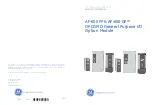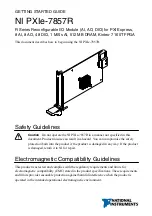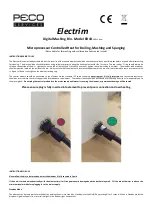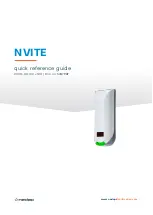
8 / 94
Siemens
TX-I/O PROFINET BIM V1.0
CM110564en_02
Building Technologies
About this Document
23.09.2010
1.4
Terminology
The key terms in TX-I/O terminology are listed below.
Term
Definition,
description
Addressing
Unit from a module number (range 1…120) and an I/O point number (ranage 1…16) from the view of
the building automation system.
Address key
Accessory part that has to be inserted in the TX-I/O module.
The mechanical coding of the key assigns the module its address.
Bus connection module
"Passive" module that relays the bus signal and the module supply from one I/O row to the next
and/or feeds an additional field supply for peripheral devices (AC/DC 12...24 V)
Bus Interface Module (BIM)
Interface between a controller and the bus of the TX-I/O modules.
Bus master
Device with general functions for a group of I/O modules.
TX-I/O module bus (island bus)
Communication bus between the bus master (bus interface module, BIM) and the connected TX-
I/O modules.
Also serves as carrier of the module supply and field supply.
The bus is constructed by plugging the TX-I/O modules together.
Electronic unit
Removable part of the TX-I/O module with the module electronics.
Functional test
Control of an output (separate island bus) – i.e., program commands are not effective.
When disconnecting the connection of the BIM tool (or in the case of power failure), the outputs
assume their original values again.
I/O function
Function in an I/O point that defines the point's operation mode (e.g., signal input, voltage output
0...10 V).
Specific functions can occupy a number of I/O points (e.g., multistage switching output).
I/O island
All TX-I/O devices (bus users) that are physically connected to the same island bus segment and
connected by a common bus master.
I/O module
Device in which the physical signals of the field devices are converted to software process values
and vice versa.
An I/O module has a number of I/O points specified by the module type. The modules are divided
into a terminal socket and a pluggable electronic unit.
I/O point
Smallest addressable unit in an I/O module.
One or more I/O points (e.g., a three-stage switching output) correspond to one data point/channel
on the automation station.
I/O row
An I/O island comprising different rows of modules.
Each row starts either with a bus master, a supply module or a bus connection module.
Terminal
Connection unit for the cables of the peripheral devices (field devices).
Terminal socket
Part of the TX-I/O module that is mounted on the standardized mounting rail and on which the wiring
is implemented.
The terminals implement the function of switching cabinet series terminals.
Configuring
Specification of the functionality of an I/O point by defining an I/O function and its parameters.
An I/O function that already exists in a module before the downloading and its I/O points are first
disabled (for details, refer to the TX-I/O engineering documentation [3]).
Local override control
Operation of an output using keys on the module.
Deletion key
Used to reset the module function to the factory settings.
Inserted in place of the address key for later removal.
Process value
Software image of the physical value in the peripheral device.
Communicated on the bus.
Parameterize
Change the properties of an I/O function during the configuration or operation (
for details, please
refer to the TX-I/O engineering documentation [3]).
Supply module
"Active" power supply that converts AC 24 V to DC 24 V.
Provides module power supply for operation of the module electronics and supply for field devices
with DC 24 V and AC 24 V.
Tool override control
Control of an output using a tool.









































